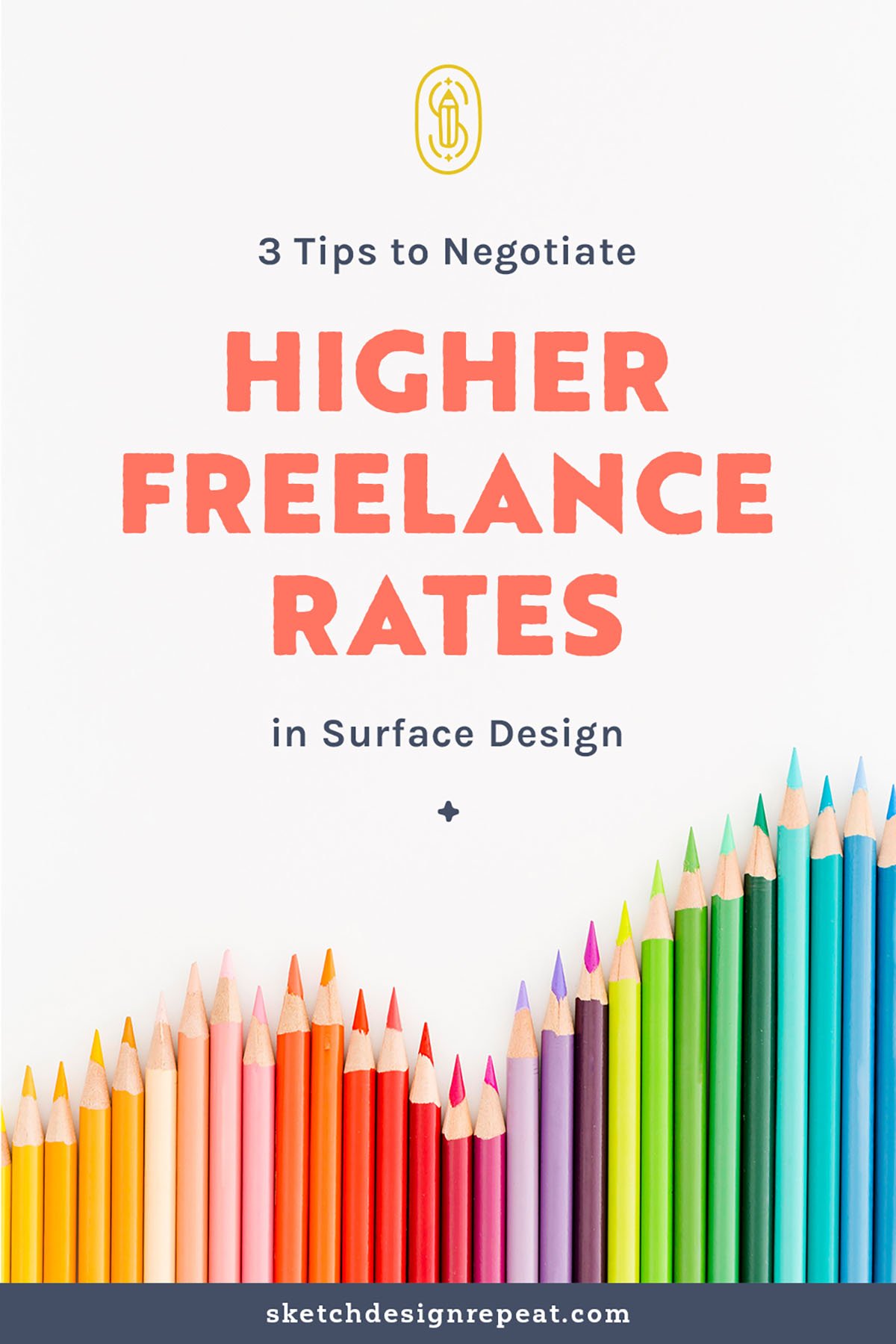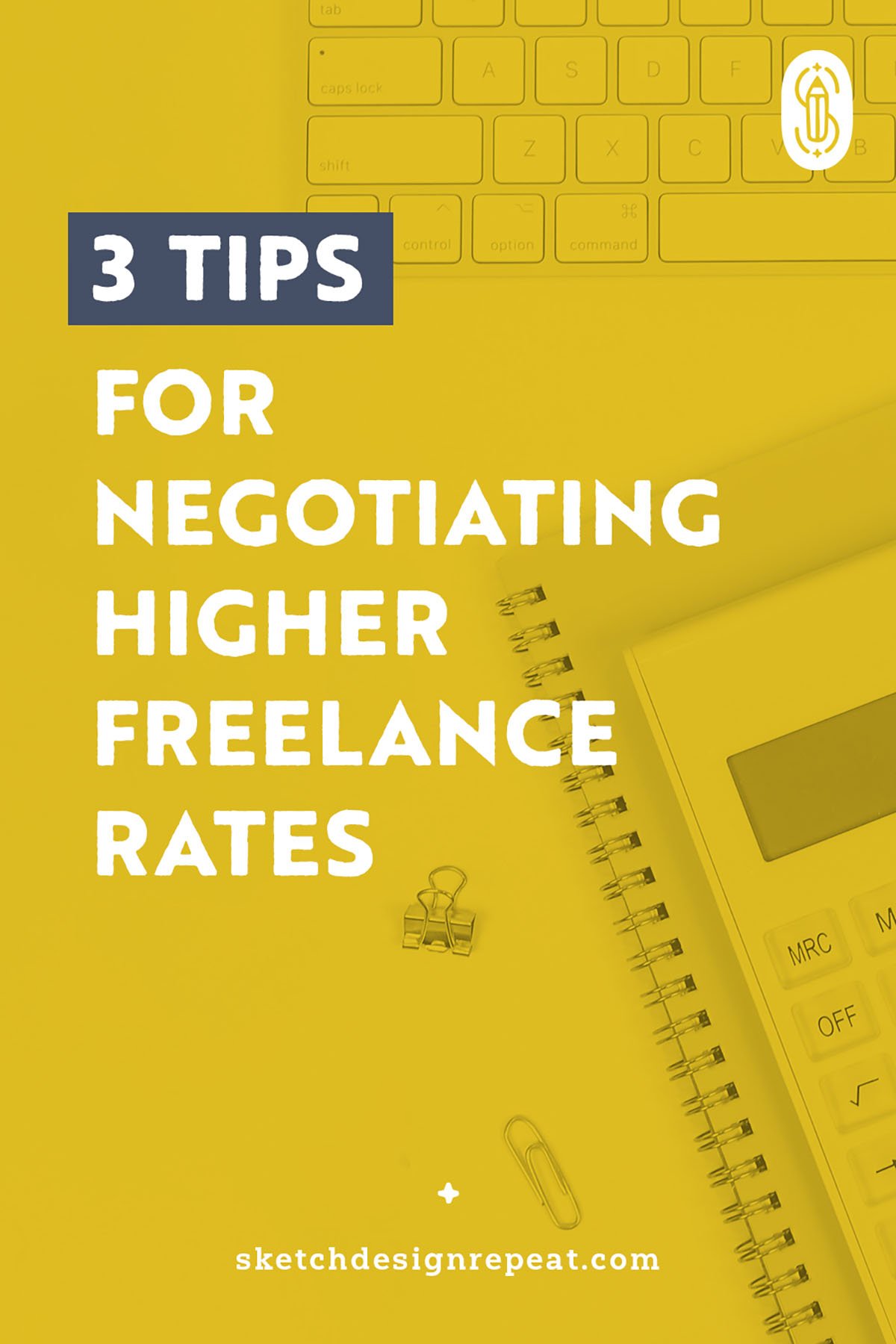Freelance work can be an incredibly lucrative endeavor for artists in all fields, including surface design. But just like how it can be difficult to price our designs for art licensing, knowing what to charge for freelance projects can also be a struggle.
And just like with licensing agreements, what often happens is we undercharge for our freelance services. So I thought it might help to share 3 strategies I’ve stumbled upon in my years as an artist that have helped me negotiate higher rates and better projects for myself.
Tip #1: Don’t Build Your Freelance Pricing Just on Your Hourly Rate
This is the first BIG mistake I see new artists make — quoting a price simply by multiplying their hourly rate by how many hours they think a freelance job will take. But here’s the rub…
Most artists have an hourly rate that’s too low AND completely underestimate the amount of time any project will take.
And what that means is you end up working a LOT less per hour than what you hoped for because the project takes you twice as long as you anticipated.
The fact is that you should start building a freelance quote by hourly rate multiplied by # of hours, but never stop there; it’s only the FIRST of several steps you should take.
You also need to know the contract details of the project — things like how many rounds of revisions they expect, if you need to do any print production, and if they want the copyright of the art. All of those details should increase the amount you’re asking for.
It’s also a good idea to add a price buffer to any quote so you have room if they negotiate you down. This is also sometimes called a PITA tax (aka. “pain in the ass”) — it basically gives you a little more compensation in the event that the client becomes too demanding and difficult to work with.
So remember, when quoting all your projects, don’t stop at just your hourly rate X hours!
Want to learn my entire process for developing a fair freelance project quote?
My Artful Pricing course walks you through the entire process, along with how to build a price guide for art licensing and teaching you how to read and negotiate contracts.
LEARN MORE
Tip #2: Don’t Share Your Hourly Rate or Rate Sheet When Quoting Your Fee
Just like you should never base a project fee solely on your hourly rate, you also should refrain from mentioning your hourly rate to your client (at least during the negotiation phase). Likewise, if you’ve built a rate sheet for yourself for surface design projects (these are especially common in the graphic design industry) it’s best not to share that with your client.
And you might be thinking, isn’t pricing transparency a good thing? So why is it a bad idea to share your rates?
The main reason I advocate for not revealing your hourly rate or rate sheet to clients is that it can really hurt your ability to negotiate. Think about it…
Let’s say you were asked to create a duo of simple illustrations for wall art. You quoted them a price of $2,000 (because you took my advice from tip #1 and added in additional money to cover your costs & time) and told the client that your fee is based on your hourly rate of $65/hr.
They’d do the math and see that 2 illustrations would take you over 30 hours — quite a long time for 2 simple wall art designs… and they’d wonder if you’d be difficult or slow to work with.
Now you and I both know that it would probably take you 20 hours or less to create the designs, but by stating your hourly rate you’re giving the client a reason to doubt your efficiency and credibility.
And the same is true when sharing the rate card. Because if you give them a quote that’s at the top end of your pricing range, but the client knows your top and bottom rates, they’ll always want to negotiate you down to the lowest price they see on your rate sheet.
So when negotiating freelance projects, never share your hourly rate or rate sheet with a client until after the contract is signed and the project has begun.
Related Article: How to Make Money from Your Surface Design Portfolio
Tip #3: Ask Fellow Artists About Your Client Before You Negotiate
This is one of my absolute favorite ways to improve my negotiating power with a new client because by getting feedback from your community about interactions they’ve had with the company, you can be more prepared to develop a fair rate AND have a better experience working with them.
It’s something I learned first hand when I started freelancing for a new-to-me client in the publishing space. I reached out in one of my Facebook groups and asked if anyone had worked with them before. Two artist friends replied saying they had, so I DMed them both and we chatted about their experiences.
And boy was I glad I asked! Both artists said that the projects were fun, but the client was picky, demanding, and had many more rounds of revisions than they’d prefer.
I still wanted to work with them though (especially because it was a cool project), so I modified my price by bumping up my rate to include an additional round of revisions and a bit of a PITA tax. But I also adjusted my expectations in working with the art director knowing that there could be potential moments of frustration.
To my delight, the client agreed to my rate and we went full steam ahead. I made sure to include extra detail and explanations when emailing them because of the info I received from my friends. The end result was they actually ended up being a joy to work with and appreciated my attention to detail, so much so that they commissioned me for a few additional projects and became my highest paying freelance client that year.
So before sending out your rate to a new client that you’re unsure about, it’s always worth asking your own community for advice and support first.
And there you have it — my 3 best tips for negotiating higher rates for yourself when discussing freelance commission projects with new clients.
Which tip was your favorite? Feel free to let me know or share your own favorite tips in the comments below.

